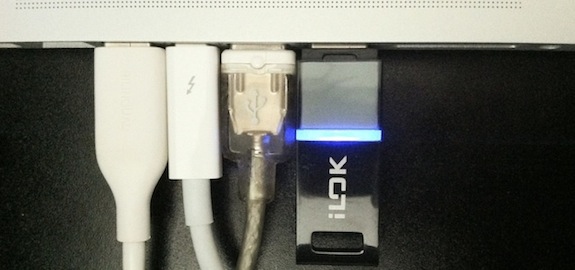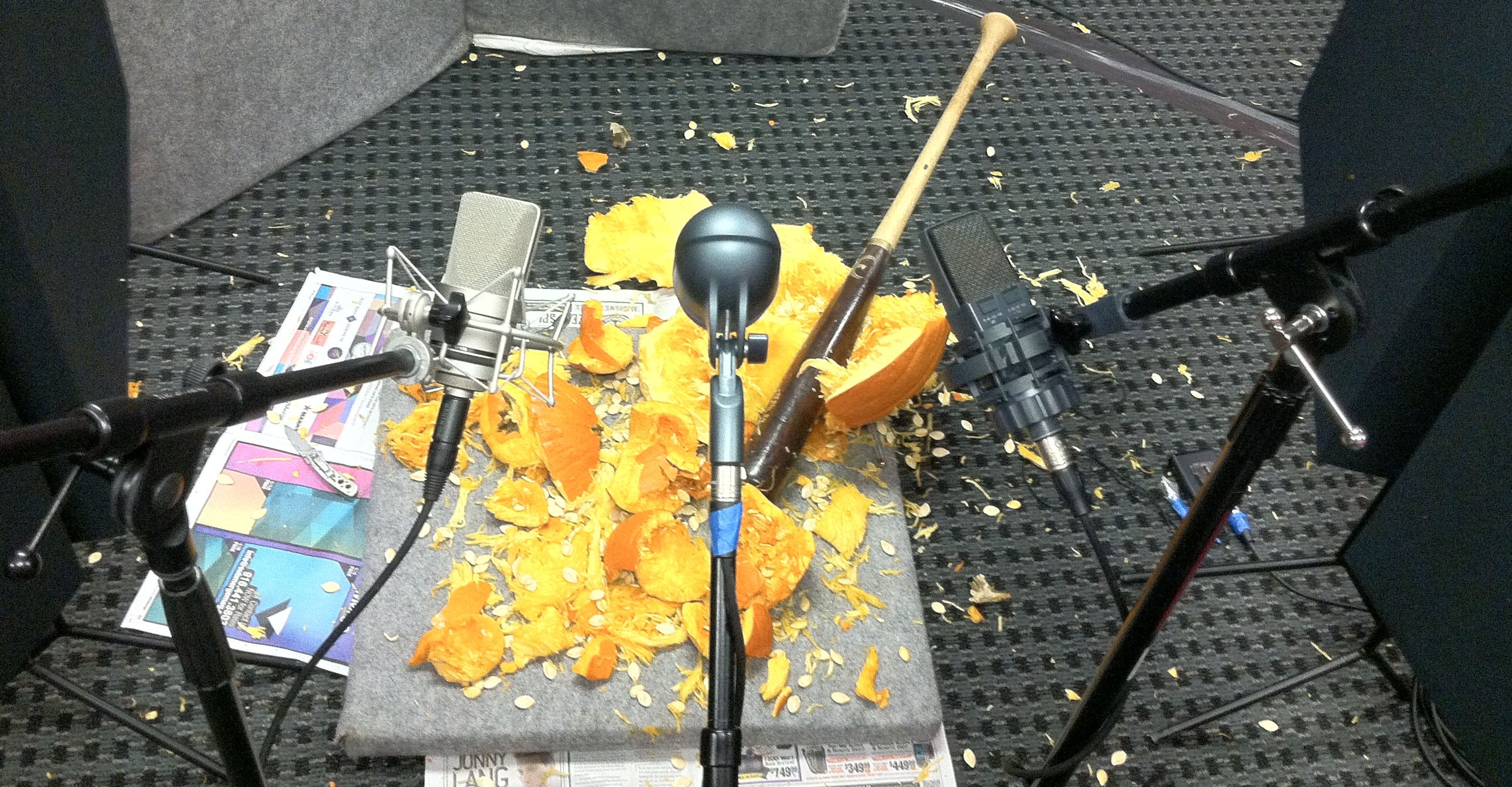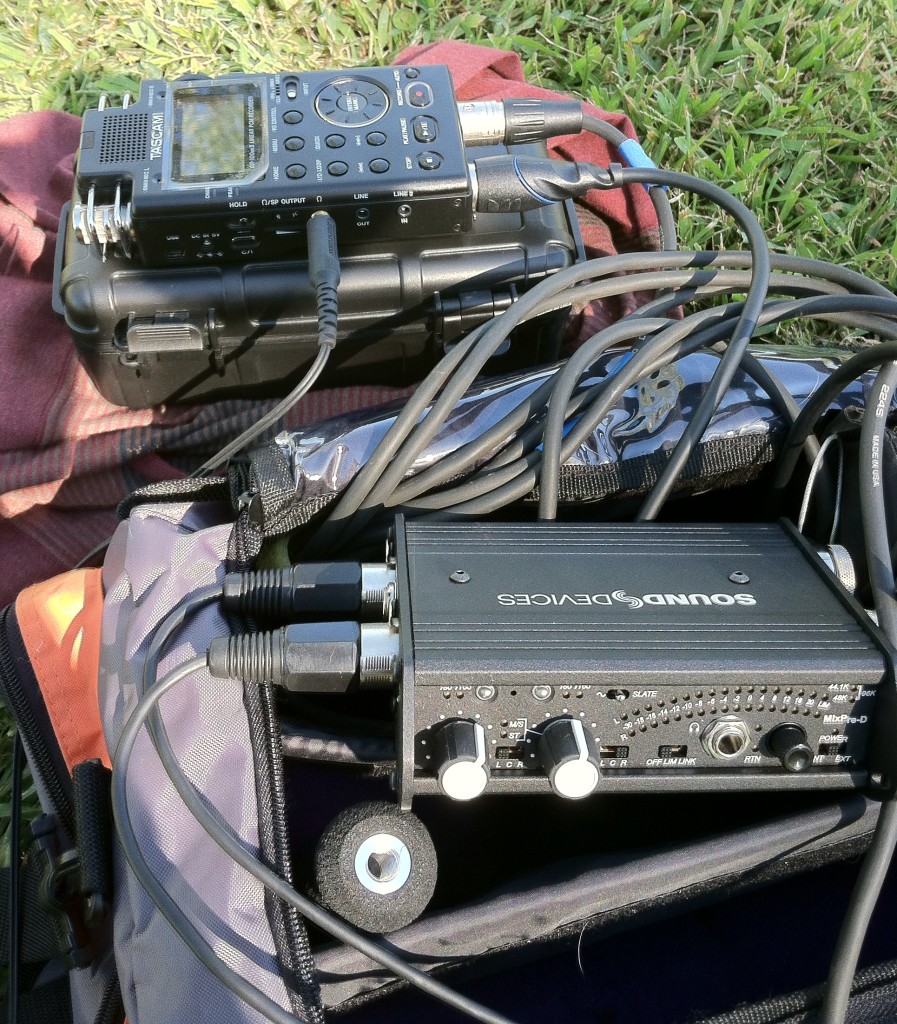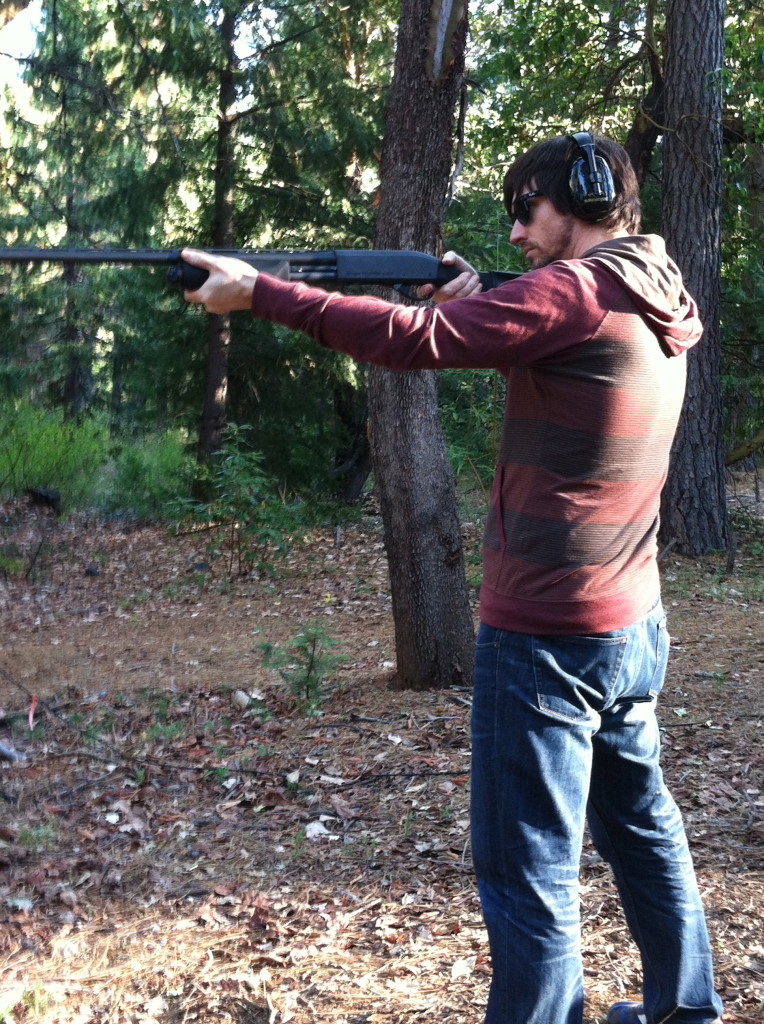The Recording of Smashing Pumpkins
I recently recorded myself smashing a few pumpkins. I’ve been thinking about doing this since last Halloween when we were throwing out our old — and at that point rotting — pumpkin. I kept thinking about how it would sound to record a pumpkin being struck with a blunt object of some kind. I imagined that it would have a nice impact sound like a punch, or something similar. This past Halloween I bought a couple of extra pumpkins so I could finally find out what it would sound like after thinking about it for an entire year.
My initial thoughts on how to approach recording this were pretty straightforward. I planned on putting up a few mics and then hitting the pumpkin really hard with a baseball bat, and that’s exactly what I did. First, I hit it with some smaller blunt objects so that the pumpkin would survive more than one single blow. After the first pumpkin collapsed in we took some of the pumpkin guts and rubbed them around to get some nice slimy, gooey horror-ish sounds. Then, we took some of the leftover pieces of the pumpkin’s shell and ripped them apart. First, we tore a few of them apart very slowly and then we broke some of the remaining pieces apart very quickly, and with more force, to produce a nice bone breaking/crunching sound.
Since I’d never recorded a pumpkin before I wasn’t entirely sure what microphones to use. I put up a Neumann TLM 103, an AKG C-414 and a Shure Beta 52A to capture the sound. My thought was that the condensers would pick up a lot of the detail and the Beta 52A would capture the “punchy” sounds down in the lower frequencies. I recorded everything into Pro Tools at 24bit / 192kHz to get the best representation of the recorded sounds possible.
I’d like to thank Angel Alvarez for all his help with these recordings. He stepped in and smashed the pumpkins a few times with several different objects, and then he also ran Pro Tools for a bit while I was busy giving the pumpkins a good smack. Angel and I did multiple takes of stabbing, mushing together and hitting the pumpkin with various objects. I’m in the process of editing the recordings mentioned above so that I can post everything for you to hear.
Eric




